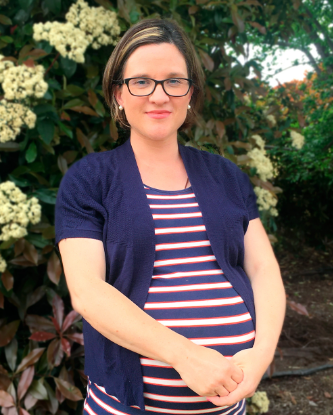We have a page published in the Together Paper each month. You can always read this article via the Wagga Wagga Diocese website, or read below:
2014 Psychologist Bethany Webster unleashed upon the world the concept of the ‘mother wound’.
Her popular blog catapulted this term – which she describes as ‘something we inherit to varying
degrees as women living in a patriarchy’ – and it went viral.
Ten years later the mother wound is still rampantly held up as the root cause of suffering for many.
And, as one would expect, anything to do with women and ‘mothers’ must have an unhealthy dose
of radical feminism thrown in.
On the one hand, women are blamed for being able to offer ‘practical but not emotional support’ to
their children thus creating a mother wound essentially via emotional neglect; but at the same time,
it must be the fault of a patriarchal society that places such blame on mothers for doing so.
In a nutshell, the ‘mother wound’ is a valid concern. How could there not be a detrimental effect
upon children when for many, full time working parents necessitate outsourcing childcare? This, I
hasten to add, is not a judgment on these families but rather a sad reflection of a society at large
that does not support and encourage true maternity and then audaciously lays the blame for
consequences squarely at the foot of the mother alone.
And then what are we left with? The vicious cycle of women blaming men for their problems and
men blaming women and so on.
Beyond this bantering is the reality that we are all wounded and, intentionally and unintentionally,
inflict wounds on others.
At the risk of repeating a trite phrase: hurt people hurt others.
We are not, however, left without the hope of healing. Saint Peter explains: “He himself bore our
sins in his body on the cross, so that, having died to sins, we might live for righteousness; by his
wounds you have been healed.” (Peter 2:24)
The victory over sin has already been won. However, we are yet to enjoy our sinless eternity which
means that we are going to continue to experience woundedness in this life. But that doesn’t mean
that our wounds define us. Nor does it mean that our wounds must go on untreated, we have a
Divine Physician available to us every single moment of our lives – no other doctor is on call that
much!
Step 1 – identify your wound.
Doctor Bob Schutz of the John Paul II Institute of Healing posits that there are 7 deadly wounds:
abandonment, fear, powerlessness, hopelessness, confusion, rejection and shame. Maybe you can’t
identify which of these wounds might apply to you. Prayerful discernment might be required.
Step 2 – uncover your identity
Another helpful way to discern your wounds is to ascertain your ‘identity belief’. Each of the 7
deadly wounds listed about has an accompanying ‘identity belief’, that is something that the wounds
makes us consider to be a reality about ourselves. It is not, however, the truth of the matter. For
instance, the identity belief that accompanies abandonment is ‘I am all alone: no one understands or
cares.’
Step 3 – pray for healing
Opening ourselves in prayer to the ministrations of Our Lord is the best way to kick off the process of
healing our wounds. Additionally, if we offer the suffering accompanied to our wounds and the
healing process, we can add another dimension: “By his passion and death on the cross, Christ has
given a new meaning to suffering: it can henceforth configure us to him and unite us with his
redemptive Passion.” (CCC 1505). Thus, our suffering becomes redemptive.
Step 4 – seek help
In order to truly achieve healing, it is more than likely that we will need guidance from spiritual
directors and/or counsellors. It is also equally likely that this process will not happen overnight. This
is not something to be afraid of – your healing will happen in God’s time so try not to set time limits
for this.
Step 5 – identify signs of healing
Finally, when healing has occurred you will be able to recognise this in your very core. Instead of an
identity belief based out of woundedness you will experience signs of your true identity as a child of
God. To continue our example, the wound abandonment, whose identity belief is that one is all
alone and misunderstood, the signs of healing of is knowing – in your very core – that you are both
connected and understood.

Written by Emily Shaw
VM Writer and Graphic Designer. Wife of one, mother of 8. Tackling growth in virtue one (baby) step at a time.
